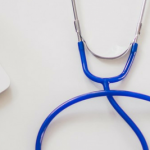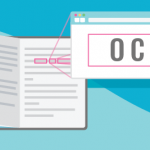There is an unrelenting growth of electronic health records, insurance forms and other documents being collected by healthcare systems. Improving quality of patient care while reducing costs are the main reasons why data mining has been such a successful movement in the healthcare industry. Through digitization of records and efficient methods of making that information available (such as through OCR), data mining improves the state of the healthcare industry by reducing costs and increasing productivity.
Benefits of Digitizing Records in Healthcare
The key benefit of digitizing records is to improve the efficiency of core business processes. The ability to identify data at the point of capture allows for elimination of input errors, improved access to information, and mobility to allow medical professionals to see patient data from anywhere. Digitizing can also be better for security. With HIPPA laws in place, being able to reduce the number of employees necessary to process patient documents ensures more security and greater HIPPA compliance.
Digitizing data alone, however, loses value when papers are just scanned into repositories to be stored with thousands of other documents. With no way to efficiently capture the data, digitizing EHR and other documents has limited impact on big data efforts and overall organizational efficiency.
Enabling Big Data Efficiency with Optical Character Recognition (OCR)
OCR gives healthcare enterprises the ability to manage, interact with, and easily utilize their large banks of patient records for big data modeling. OCR software allows a computer to recognize text within image documents like scanned EHR records. With text-searchable records, healthcare organizations can replace hours spent manually searching through patient records with simple, instant keyword search, increasing productivity and improving quality of care. Likewise, health insurance organizations can improve employee efficiency while providing a better, faster customer experience.
In addition, applying OCR to EHRs, insurance claims, identification documents and other forms is a first step toward making that information available for big data systems. Healthcare organizations can implement a more touchless workflow, limiting the number of employees needed to gather the data for their intelligence and analytics processing. By using OCR, they can systematically convert paper and scanned images to an acceptable input format without human intervention. This not only frees up man hours for higher value tasks but improves security and compliance by limiting exposure of protected information to a smaller number of workers. Further, moving the data gathering workflow from a manual process to an OCR-driven model eliminates the chance for input errors and helps to strengthen the accuracy and integrity of big data analytics.
Would your organization benefit from more efficient data mining with OCR? Start your free evaluation of CVISION’s Maestro OCR software today!






